Thai Constellation Monstera: Your Guide to Keeping This Stunning Plant Alive
Let’s be honest, few plants turn heads quite like the Thai Constellation Monstera. For as long as I’ve been obsessed with tropical plants, this one has been the star of the show. I still remember the first time I saw a big one in a specialty greenhouse—the price tag was, uh, memorable. For a long time, it was a collector’s dream, but now they’re a bit more accessible. Still, this isn’t a plant you can just stick in a corner and ignore. It needs you to understand what makes it tick.
In this article
So many people fall for those gorgeous, speckled leaves without realizing what a diva this plant can be. This guide is built on years of experience, both with my own collection and from walking countless people through the same challenges you’ll likely face. We’re going to get into the nitty-gritty of why its variegation is special, the exact soil mix and watering habits I swear by, and how to fix problems when they pop up. This is about building the confidence to help this beautiful plant truly thrive.
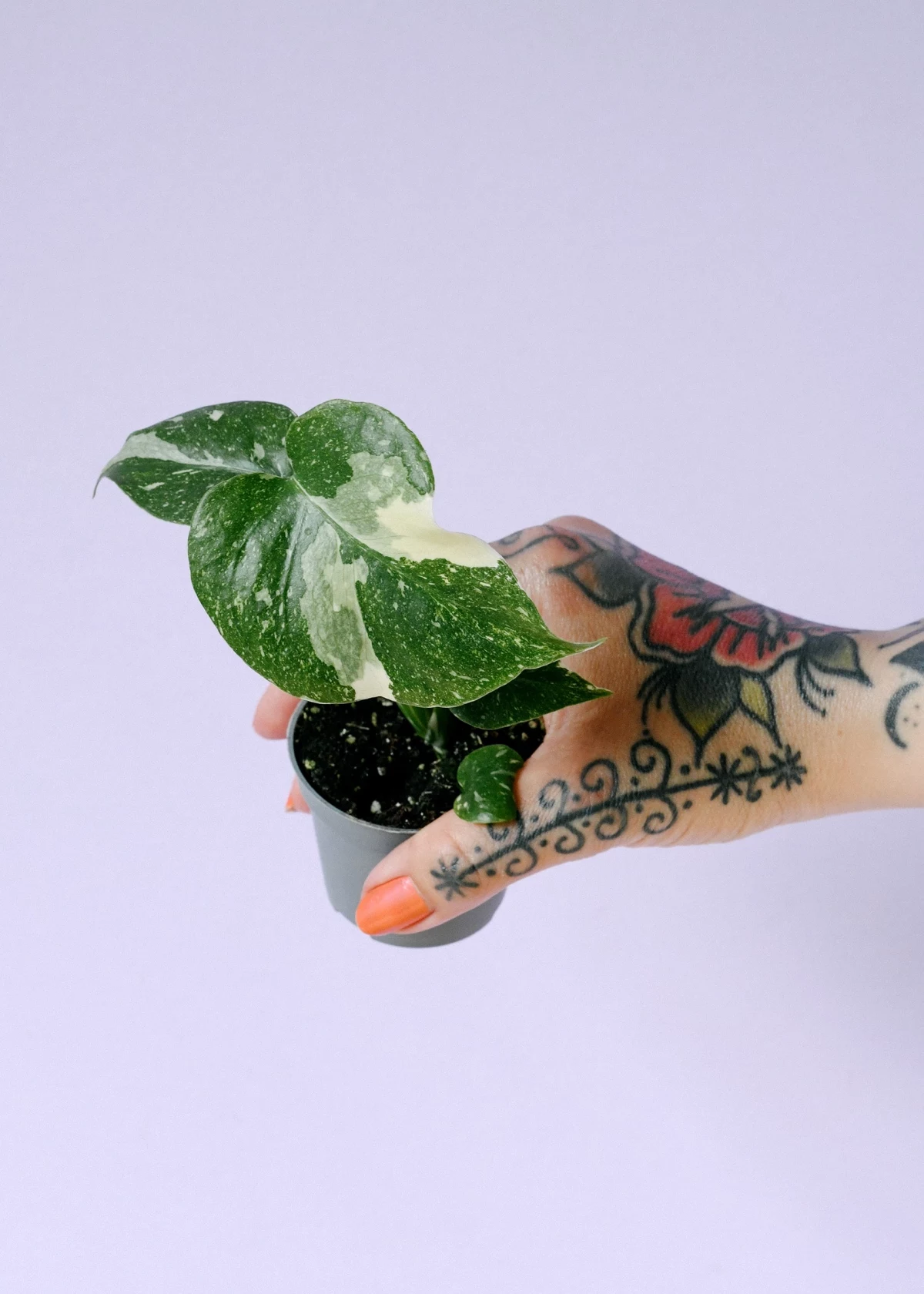
By the way, since this is an investment piece, you’re probably wondering about the cost. It really depends on size and your local market, but as a general rule, expect to pay around $40-$80 for a small, unrooted cutting. For a well-rooted plant with 2-3 leaves, you’re looking at the $100-$200 range. And for a more mature, established plant, the price can easily be $300 or more. Prices do fluctuate, so it pays to shop around!
First Things First: Your 48-Hour Survival Guide
Okay, you did it. You bought one. It’s on its way or you just brought it home. Don’t panic! That first 48 hours is crucial for setting you both up for success. Resist the urge to ‘do’ things to it right away.
Here’s your checklist:
- Unbox with care. It’s been on a journey. Be gentle.
- Inspect it THOROUGHLY. Get up close and personal. Check the undersides of leaves, the crevices where leaves meet the stem… you’re looking for tiny pests like thrips or spider mites. It’s much easier to deal with them now than after they’ve invaded your other plants.
- Quarantine! I can’t stress this enough. Keep your new arrival far away from your other houseplants for at least two weeks. This gives you time to spot any sneaky pests that you might have missed.
- Don’t repot it. I know it’s tempting, but the plant is already stressed from travel. Let it acclimate to your home’s environment in its nursery pot for at least a few weeks.
- Check the soil, but don’t water automatically. Stick your finger two inches deep. Is it bone dry? Okay, give it a drink. Is it even slightly damp? Leave it alone. More plants die from over-caring in the first week than from neglect. Give it a good spot with bright, indirect light and just let it be.
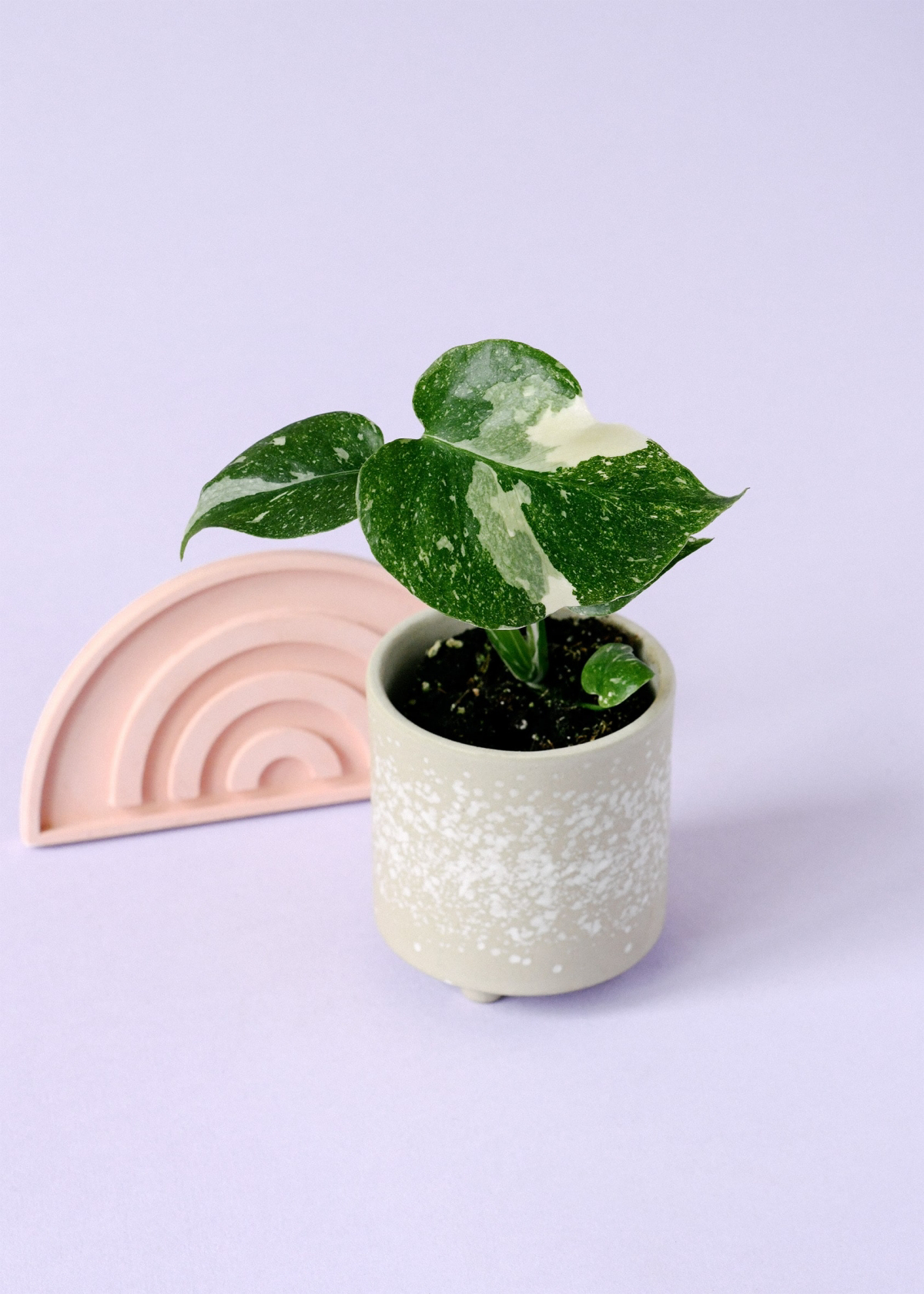
Why the ‘Constellation’ Pattern is So Special
To really care for a Thai Constellation, you’ve gotta understand what you’re working with. It’s a special version of the classic Monstera deliciosa, but its variegation is totally different from its popular (and fussy) cousin, the ‘Albo Variegata’. This difference is the key to its predictable beauty.
The Thai Constellation was born in a lab through tissue culture, where a stable genetic mutation was encouraged. This means the beautiful, creamy-white flecks are evenly distributed throughout the plant’s genes. Think of it like chocolate chips that are mixed all the way through the cookie dough. Every new leaf is pretty much guaranteed to have that gorgeous ‘starry night’ pattern. It won’t suddenly give you an all-green leaf or, worse, an all-white ‘ghost’ leaf that can’t survive.
The Albo, on the other hand, is a bit of a genetic gamble. It’s a chimera, meaning it has two different sets of DNA growing side-by-side—one that makes chlorophyll (the green stuff) and one that doesn’t. This is an unstable setup. An Albo can ‘revert’ to all green if the green cells take over, or it can produce those stunning but doomed all-white leaves that die off because they can’t photosynthesize. The stability of the Thai Constellation is its biggest selling point.
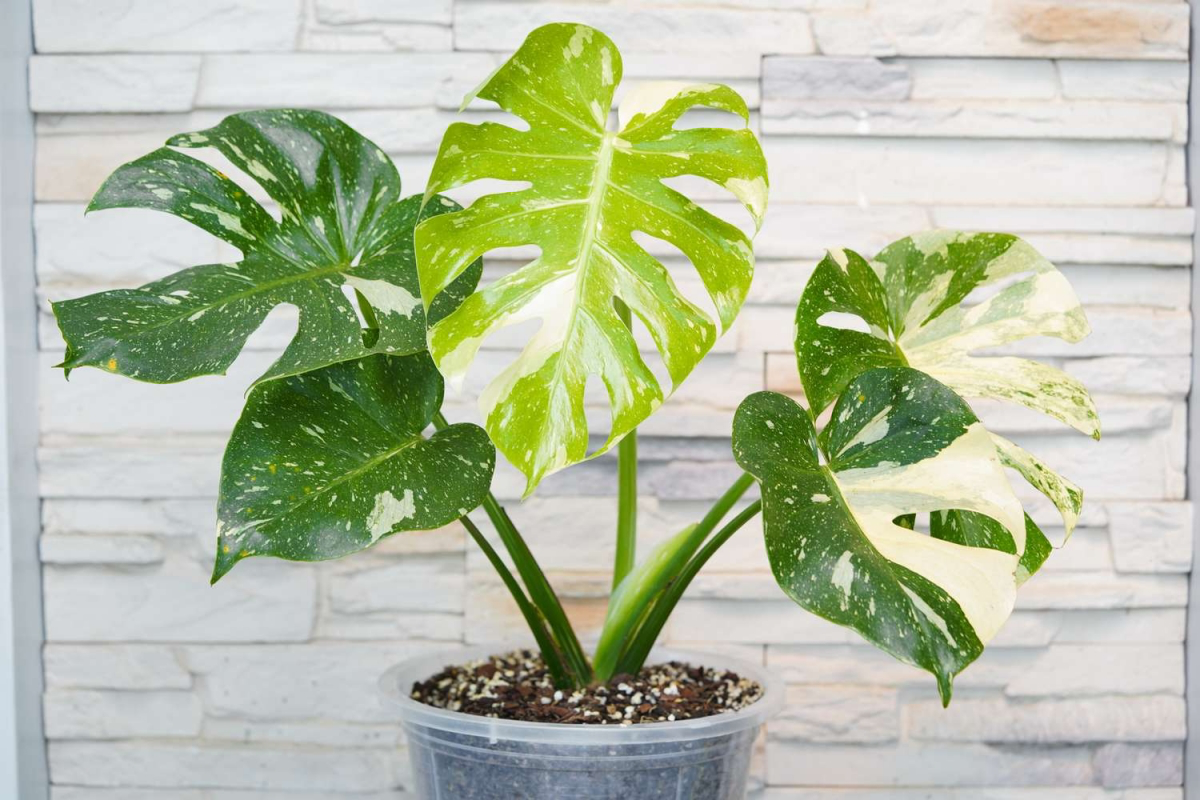
So what does this mean for you? Well, all those beautiful white and cream-colored spots are basically freeloaders—they don’t have chlorophyll, so they can’t make energy. Your plant is running on less power than a regular all-green Monstera. It grows slower and is way more sensitive to getting the light wrong. Your job is to give the green parts the perfect conditions to work overtime and support the whole plant.
My Go-To Methods for Healthy Growth
Honestly, getting the basics right is 90% of the battle. I’ve tweaked my routine over the years, and this is what works for keeping these plants consistently happy.
Light: The Make-or-Break Factor
You always hear “bright, indirect light,” but what does that even mean? For a Thai Con, you need to be specific. It needs strong light to make up for its variegation, but direct sun is a killer.
- The Sweet Spot: The best place is usually a few feet from an east-facing window that gets gentle morning light. A spot five to ten feet back from a south or west-facing window can also work, as long as no direct, harsh sunbeams are hitting the leaves in the afternoon. Direct sun will literally scorch the delicate white parts, leaving behind ugly, permanent brown spots.
- Light Meters for Nerds: If you really want to dial it in, a light meter app on your phone is a great tool. You’re shooting for a reading between 200 and 400 PPFD for several hours a day. It sounds technical, but it’s a good range for effective photosynthesis without burning the plant.
- When Natural Light Fails: If your home is on the darker side, a quality LED grow light is a game-changer. I use full-spectrum LEDs and position them about 24 to 36 inches above the plant for 12-14 hours a day. Just watch the plant—if new leaves are small with weak variegation, it might need more light.
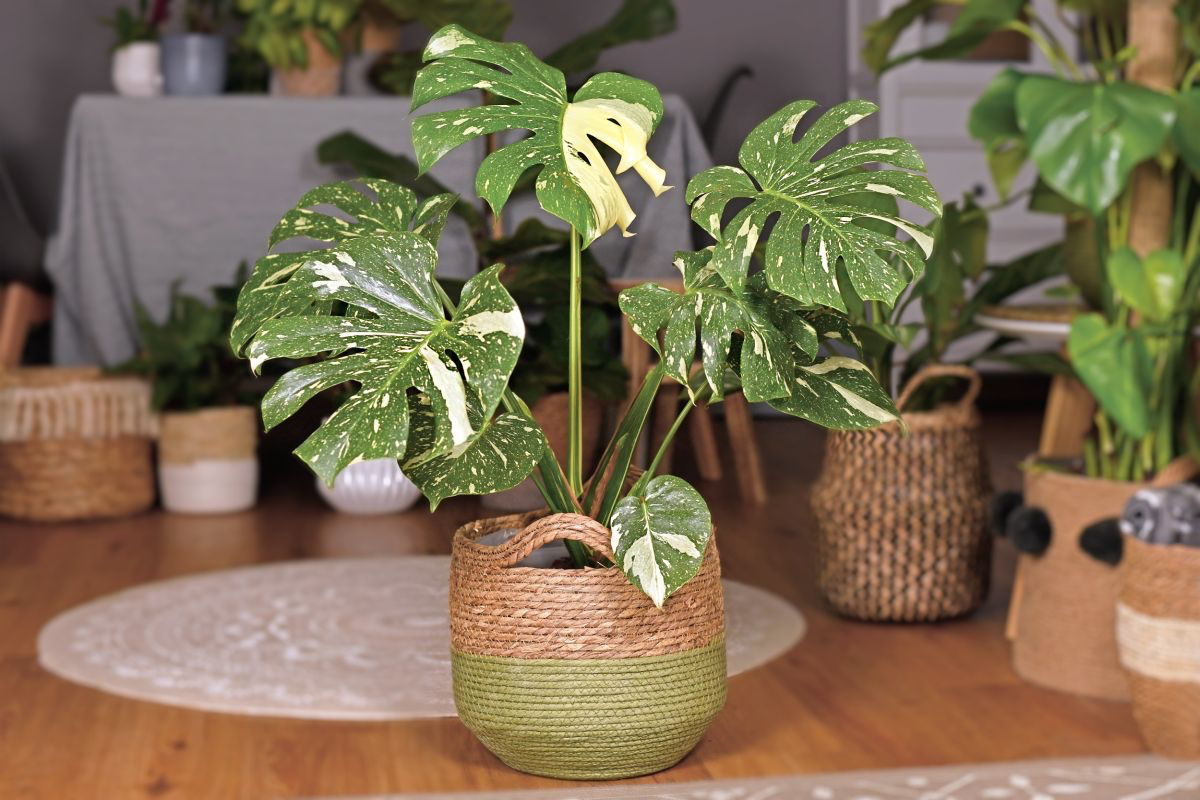
Soil Mix: The Foundation for Happy Roots
Thai Constellations are ridiculously prone to root rot. That standard potting soil from a bag is a death sentence—it’s too dense, holds too much water, and suffocates the roots. I mix my own, and it’s worth the tiny bit of extra effort.
My Favorite Airy Aroid Mix:
- 1 part Orchid Bark: Creates big air pockets for roots to breathe.
- 1 part Coarse Perlite or Pumice: Keeps the mix light and ensures fast drainage.
- 1 part Coco Coir: Holds moisture without getting boggy like peat moss can. (Good to know: give it a good rinse before using to wash away excess salts.)
- 1/2 part Horticultural Charcoal: Helps absorb impurities and keeps the soil ‘sweet’.
- 1/2 part Worm Castings: A gentle, natural fertilizer that adds good microbes.
You can find all these ingredients at a big-box garden center like Home Depot or Lowe’s, or online. The whole batch should only set you back about $20-$30 and will be enough for several plants. If you’re not into DIY, look for a pre-made “Aroid Mix” from a specialty plant shop online. It costs more, but it’s a great shortcut.
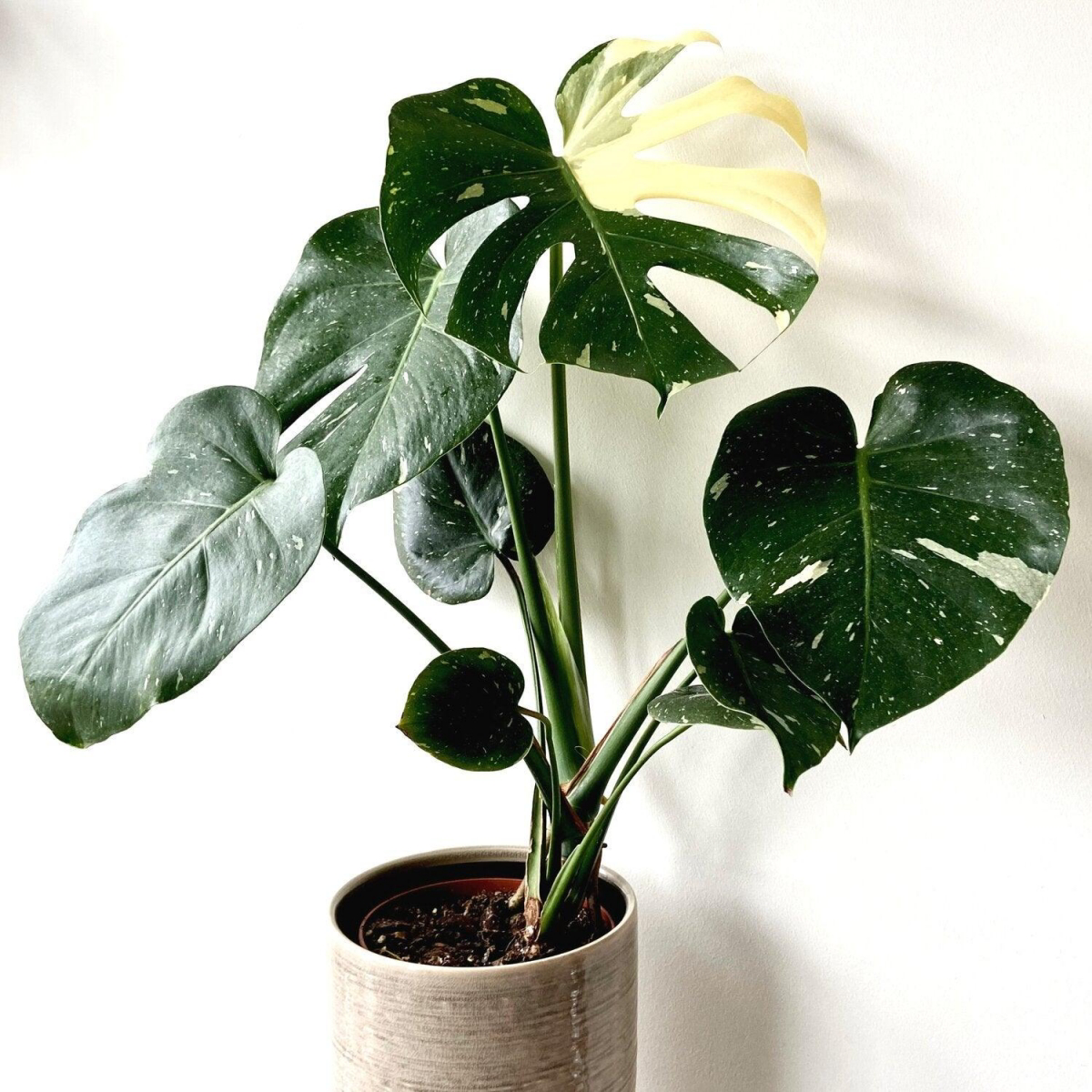
Watering: The Art of Not Caring Too Much
I’m convinced more Thai Cons are killed by overwatering than anything else. I learned this the hard way with an expensive cutting years ago… the leaves yellowed one by one, and by the time I checked, the roots were a black, mushy mess. It’s a mistake you only make once.
Forget watering on a schedule. Instead, learn to read the plant.
- The Pot Weight Trick: This is the best method. After you’ve watered it thoroughly, pick up the pot. Feel how heavy it is. A few days later, pick it up again. It will be noticeably lighter. You’ll quickly learn to recognize the ‘time to water’ weight.
- The Finger Test: When in doubt, stick your finger two inches into the soil. If you feel any dampness at all, wait. It wants to be almost completely dry before you water it again.
- Proper Technique: When it’s time, take it to the sink and drench it with lukewarm water until it flows freely out the bottom. This flushes out mineral buildup. Then—and this is critical—let it drain completely. Never, ever let it sit in a saucer of water.

Humidity & Temperature
These are jungle plants, so they want warmth and humidity. Aim for a temperature range between 65°F and 85°F (18°C to 29°C) and keep them away from drafts. For humidity, 60% or higher is ideal. If you see crispy brown edges on the leaves, the air is too dry. Misting doesn’t really work; a small humidifier near the plant is your best bet and a worthy investment.
Fertilizing and Support
Because they grow slower, they’re not heavy feeders. Over-fertilizing is a common mistake.
- Fertilizer: During the spring and summer, use a balanced liquid fertilizer diluted to 1/4 strength every other time you water. In the fall and winter, cut back to once a month or stop entirely. Pro tip: Always water the plant first before adding fertilizer to avoid burning the roots.
- Support: As it grows, it will want to climb. A moss pole or wood plank isn’t just for looks. When the aerial roots attach to a support, it signals the plant is secure, which encourages it to produce those huge, mature leaves with the famous splits (fenestrations).
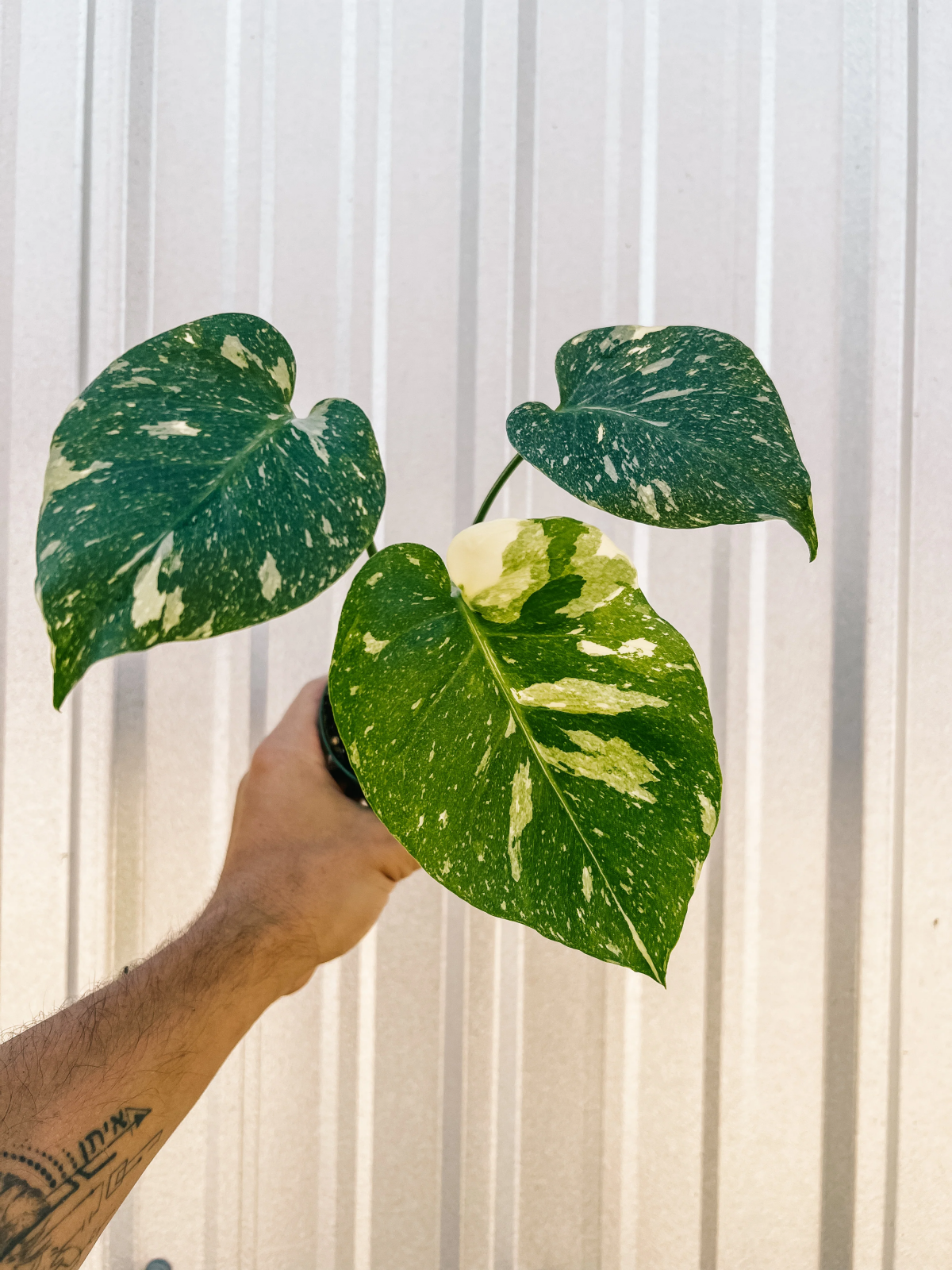
Propagation: Making More (and Not Messing It Up)
Propagating is straightforward but, yes, it’s nerve-wracking to chop up your expensive plant. The absolute key is the node—the little bumpy ring on the stem where a leaf and aerial root emerge. No node, no new plant.
- Choose a cutting with at least one leaf, a node, and maybe an aerial root if you’re lucky.
- Use a clean, sharp knife to cut the stem about an inch below the node. I always wipe my blade with rubbing alcohol to be safe.
- Root it in your medium of choice. I prefer sphagnum moss for valuable cuttings because it holds moisture evenly, but water works fine too. Just put the node in the medium, place it in a warm, bright spot, and be patient. It can take 4-8 weeks.
Okay, You Have Roots! Now What? (Don’t Panic)
This is where so many people stumble. You’ve got beautiful 2-3 inch roots, and now it’s time to move your cutting to soil. This is a delicate transition.
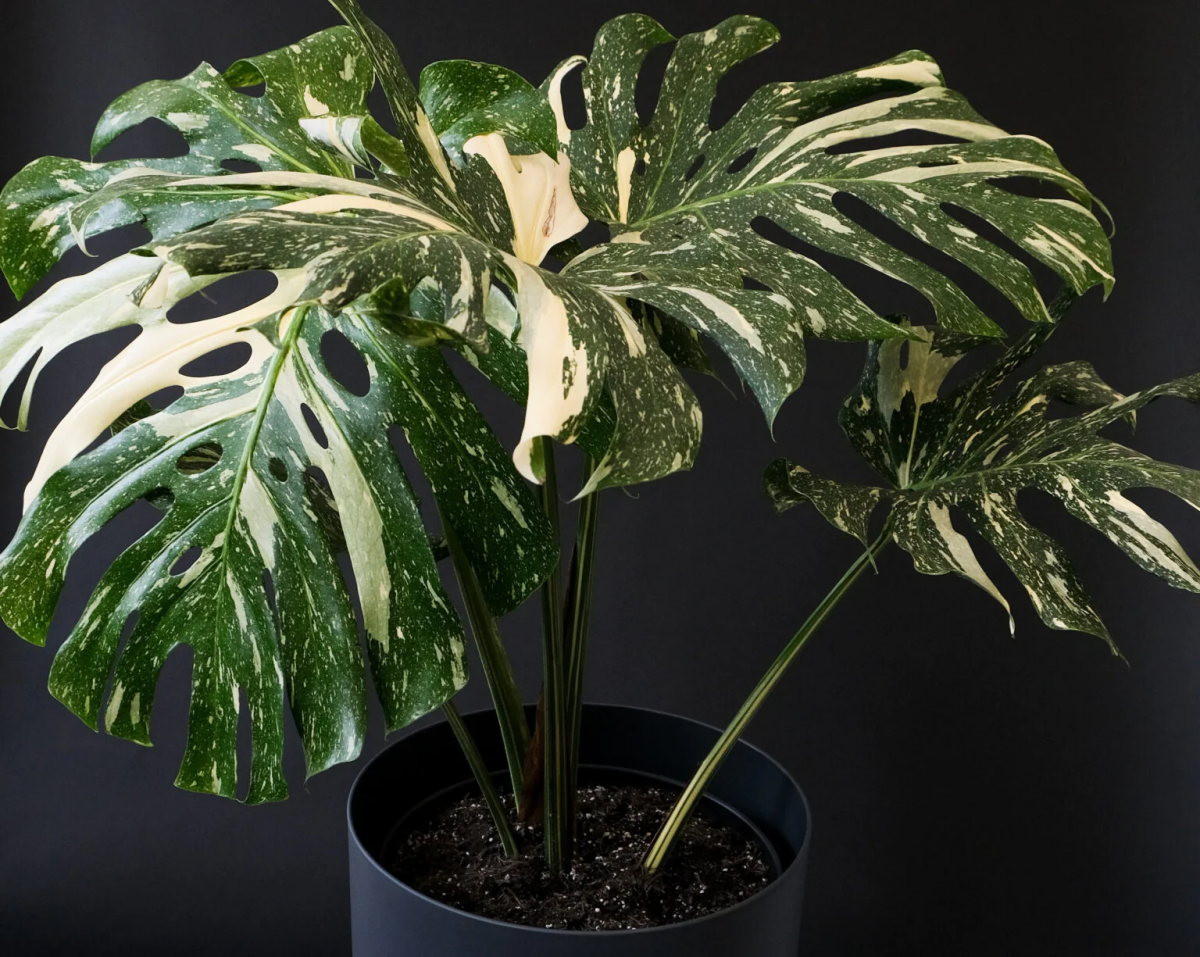
- Pick a small pot. A 3-4 inch pot is usually perfect. Don’t put a small cutting in a huge pot; that’s a recipe for root rot.
- Use your airy soil mix. Fill the pot, make a little hole, and gently plant your rooted cutting.
- Water it in lightly. Just enough to settle the soil.
- Ease the transition. For the first couple of weeks, keep the soil a little more consistently moist than you would for a mature plant. This helps the roots adjust from a life in water to a life in soil. After that, you can switch to your normal watering routine.
Troubleshooting the Inevitable Problems
- Root Rot: The number one killer. Yellowing lower leaves and a mushy stem base are bad signs. If you suspect it, act fast. Unpot, trim off ALL black, mushy roots with sterile scissors, and repot in a fresh, airy mix. Heads up: Choose a pot that’s just big enough to fit the remaining healthy root ball, with maybe an inch of space around it. Too much empty, wet soil will just cause the problem all over again. Don’t water for at least a week to let it recover.
- Pests: Thrips. Ugh. The absolute worst. They leave silvery damage and tiny black specks on the leaves. Isolate the plant immediately and wipe the leaves down with a mix of water, a few drops of dish soap, and a splash of rubbing alcohol. For bad infestations, an insecticidal soap is your friend.
- Browning Leaf Edges: Almost always a sign of low humidity. Get that humidifier going. It can also be from using tap water that’s high in minerals; try using filtered or distilled water and see if that helps new growth.
- Yellowing Leaves: Most often, this is from overwatering—check the roots! But it can also mean it’s thirsty or needs nutrients. If it’s just one old, bottom leaf yellowing, that’s usually just the plant’s natural life cycle.
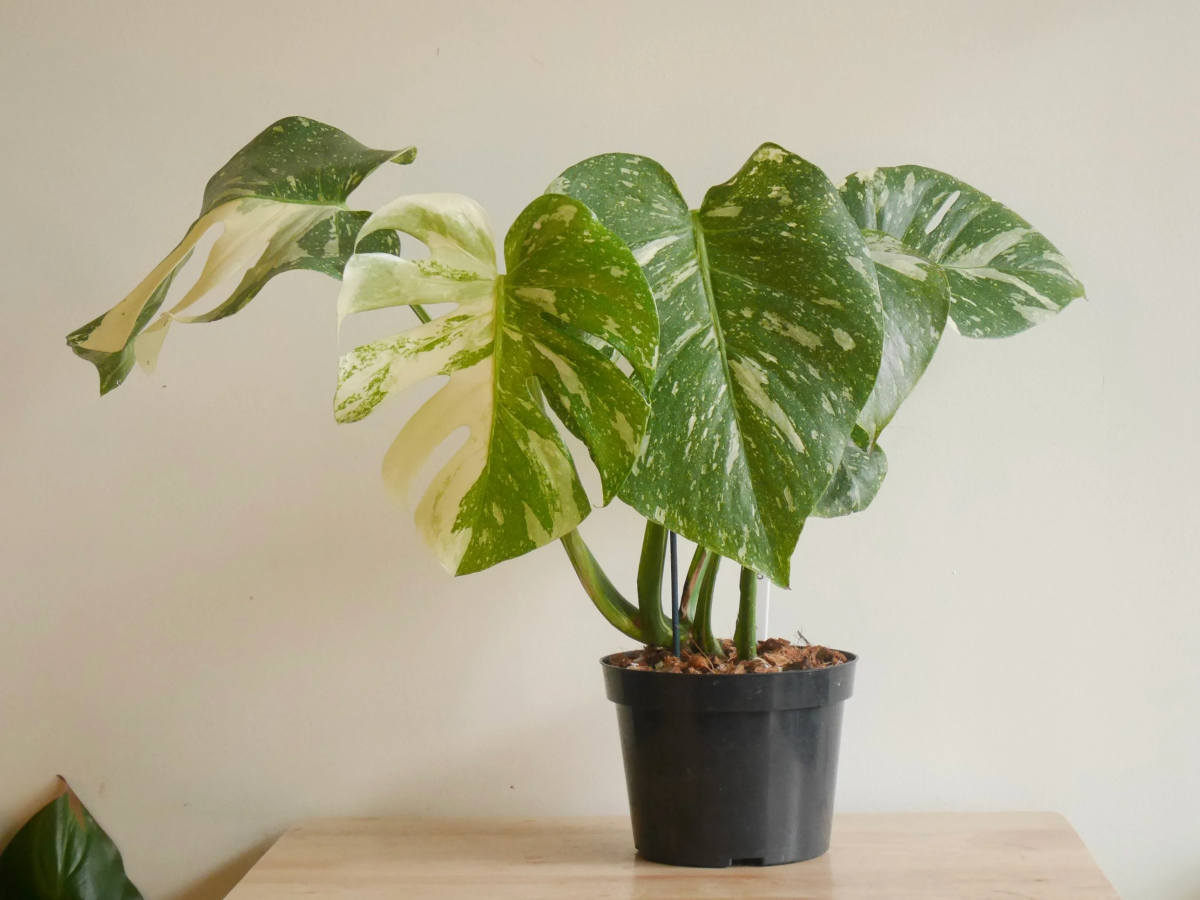
A Quick Word on Safety
Super important: all parts of the Monstera are toxic to cats, dogs, and humans if chewed on or eaten. The plant contains crystals that cause immediate and painful irritation and swelling in the mouth. Please, please, please keep this plant well out of reach of curious pets and children.
Caring for a Thai Constellation is a journey. It forces you to be an observant, engaged plant parent. You learn its rhythms, you celebrate each new unfurling leaf, and you build a real connection. The reward isn’t just a beautiful plant—it’s the satisfaction of helping it thrive.
Galerie d’inspiration
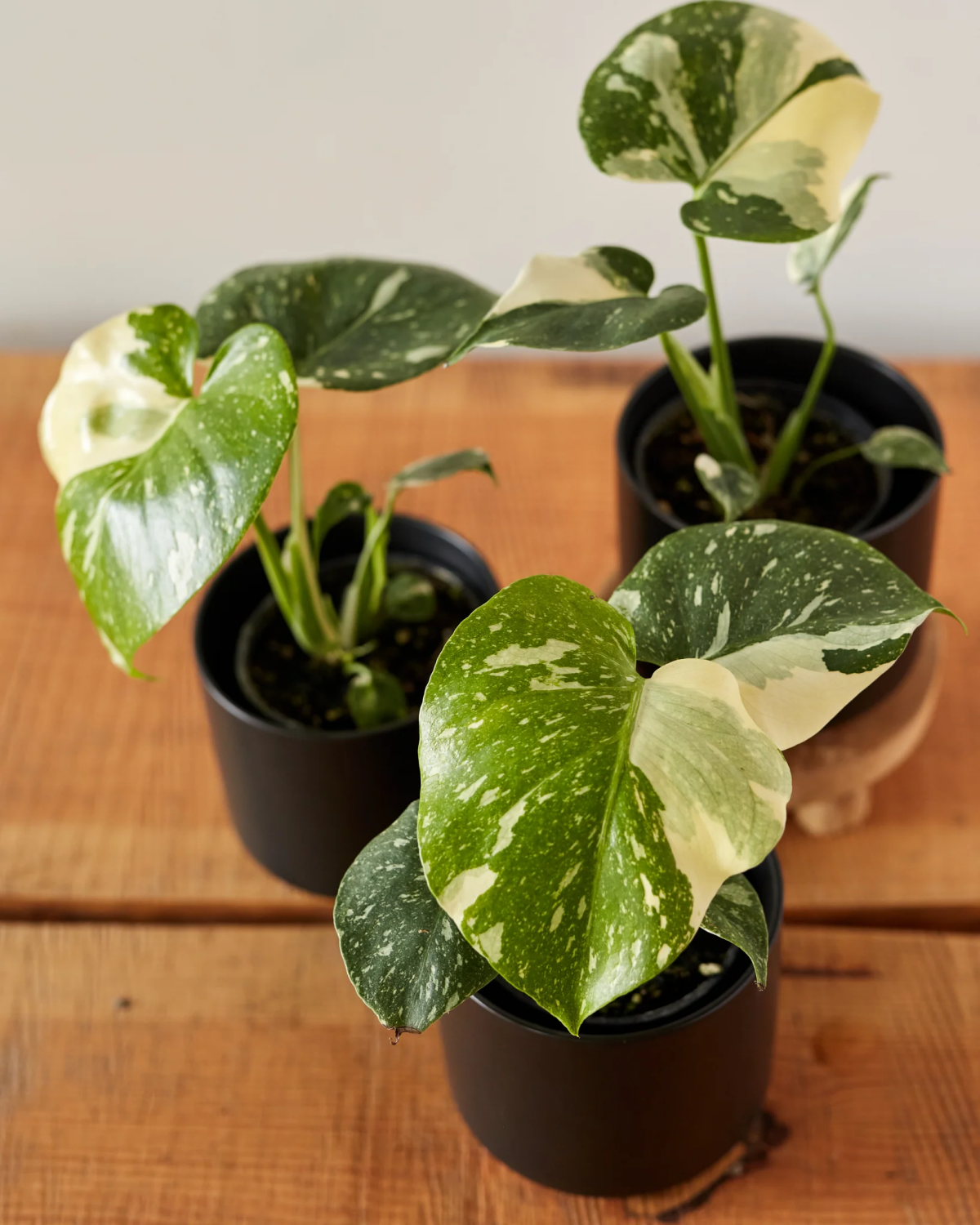

Thai Constellation: Characterized by its stable, creamy-yellow splashes and specks scattered across the leaf, resembling a starry night sky. The variegation is genetically stable, meaning it won’t revert to all green. It tends to have a more robust, slower growth habit.
Monstera Albo Borsigiana: Known for its dramatic, pure white sectoral variegation, with large patches or half-moon leaves. This variegation is unstable and can revert. It’s a vining subspecies, often requiring more support as it matures.
Ultimately, the Thai Constellation is often considered a more reliable investment for consistent, galaxy-like patterning.
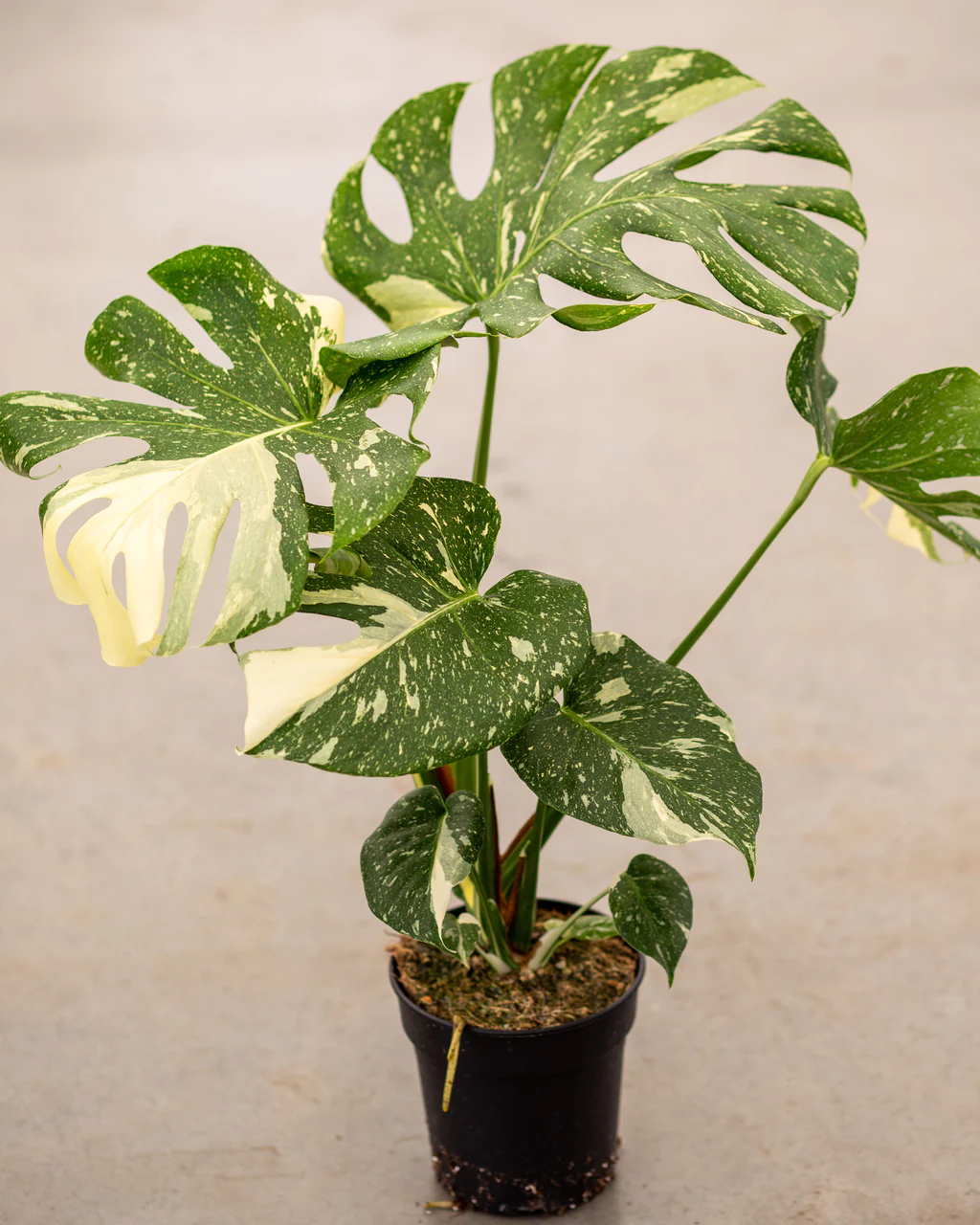
The ‘Thai Constellation’ variety was developed in a tissue culture laboratory in Thailand, which is how it gets both its name and its stable variegation.
Unlike other variegated monsteras that can revert to green, the genetic makeup of the Thai Constellation ensures that the creamy speckles are a permanent feature. This lab-grown origin is also why, for a long time, supply was limited and prices were astronomical. Each plant is essentially a perfect clone, promising that signature starry pattern on every new leaf.
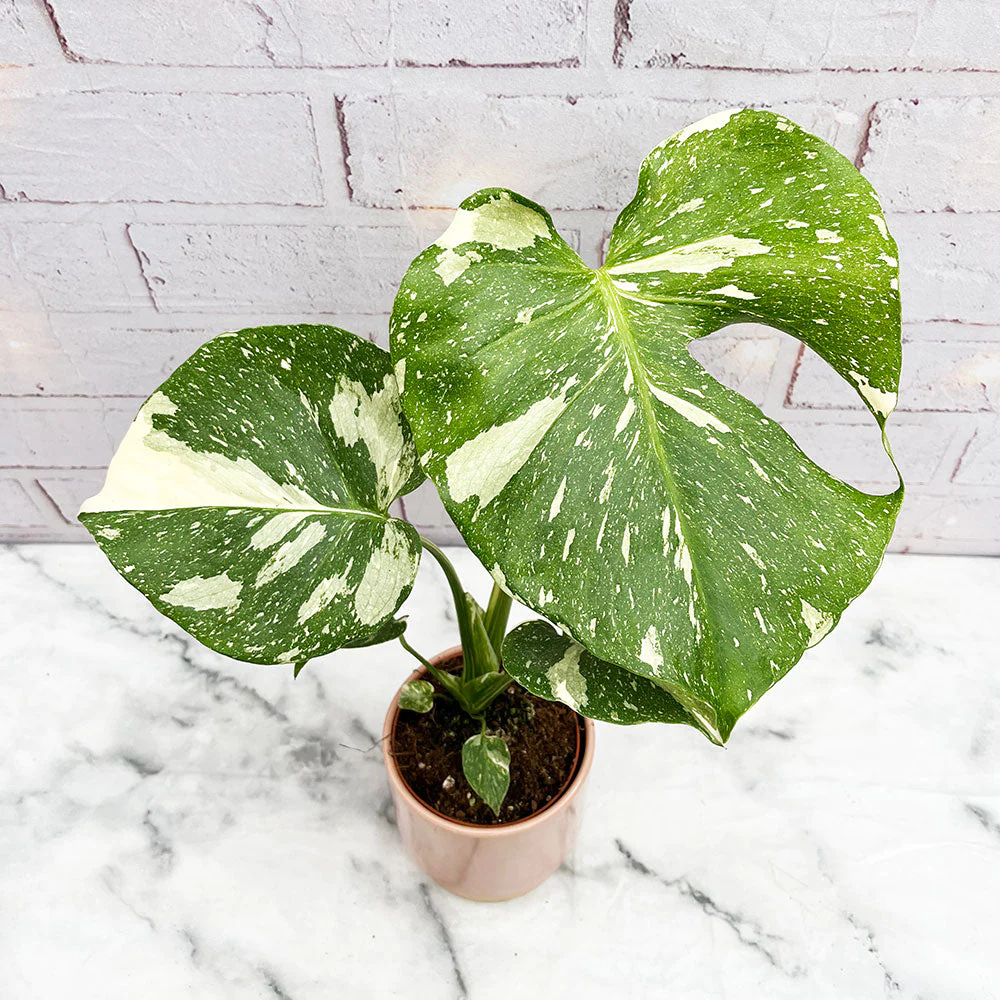
Seeing some crispy, brown edges on those beautiful creamy sections?
Don’t panic; this is the most common issue. The white and cream parts of the leaf lack chlorophyll, making them more delicate and unable to process light into energy. They are the first to show stress from inconsistent watering or low humidity. Try grouping it with other plants or placing a small humidifier nearby. Aim for humidity levels between 60-70% to keep those celestial splashes pristine.
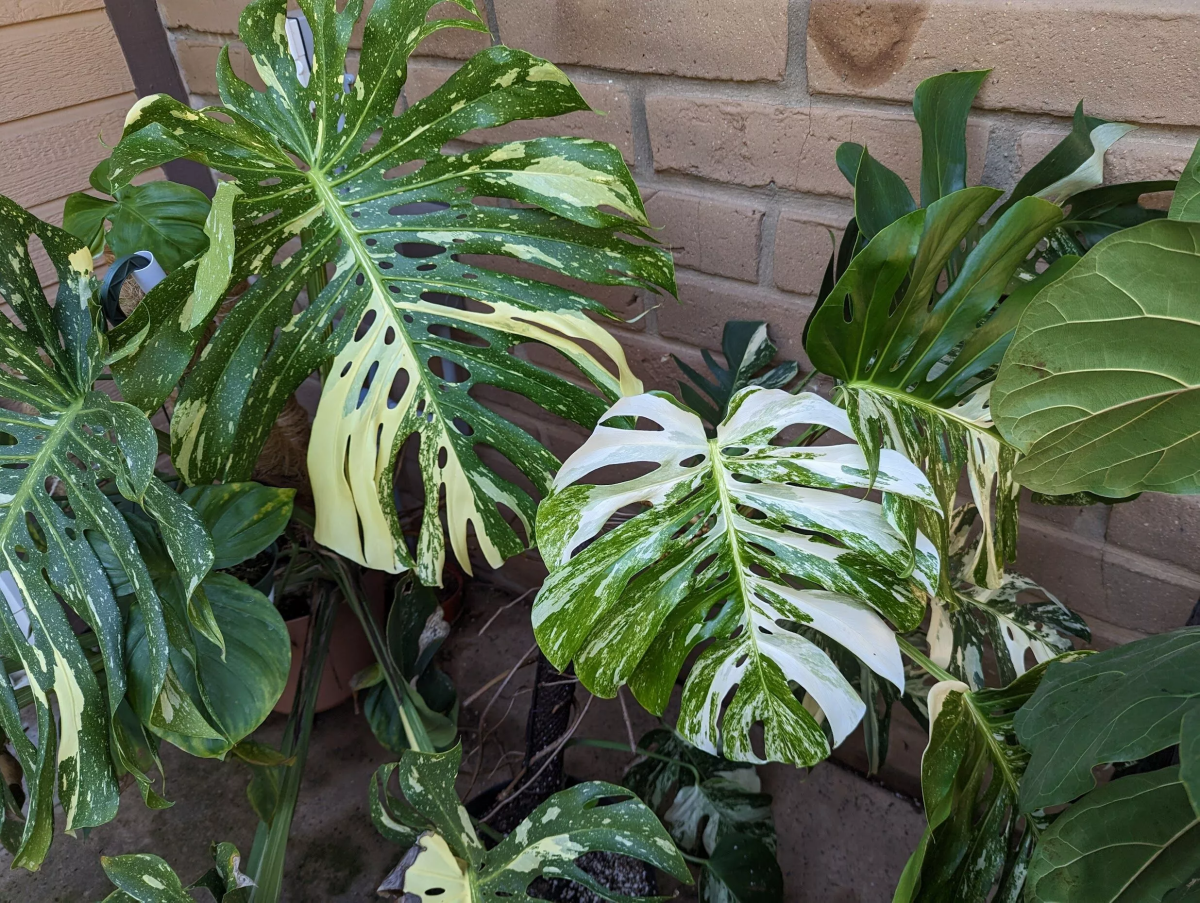
To prevent root rot and mimic its natural environment, your Thai Constellation needs a chunky, airy soil mix. A generic potting soil will hold too much water and suffocate the roots. A well-balanced custom mix is your best bet for a happy plant.
- 40% Orchid Bark: For excellent aeration and structure.
- 30% Perlite: To keep the mix light and prevent compaction.
- 20% Coco Coir: As a sustainable alternative to peat moss for moisture retention.
- 10% Horticultural Charcoal & Worm Castings: For detoxification and a slow-release nutrient boost.
Think of your Thai Constellation as a piece of living art and choose its pot accordingly. A simple, minimalist pot in a solid, neutral color—like matte black, deep terracotta, or clean white—will allow the spectacular foliage to be the star. Avoid overly ornate or brightly colored pots that compete for attention. The goal is to frame the masterpiece, not overwhelm it.










